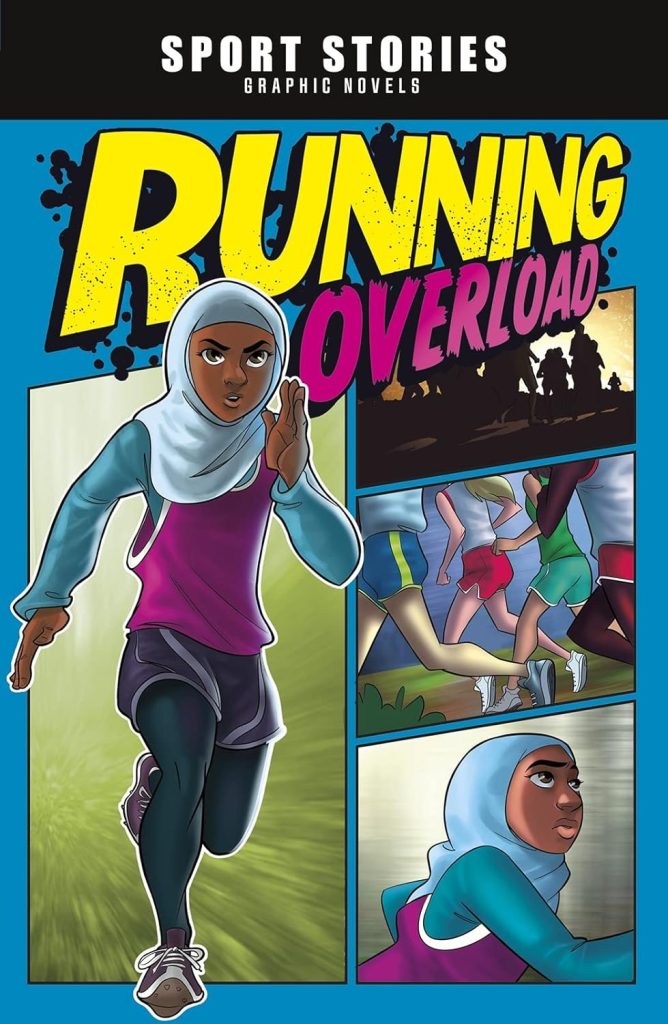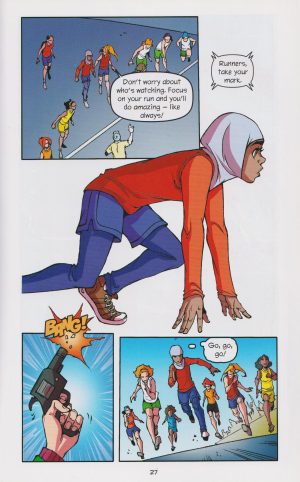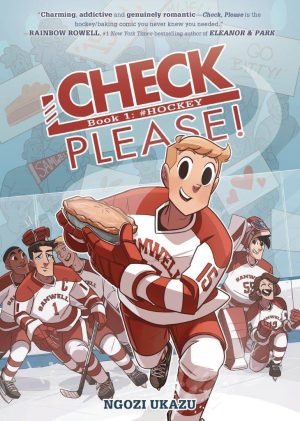Review by Frank Plowright
Running Overload is one of a series of similarly designed graphic novels under the ‘Sport Stories’ imprint in the UK, each covering a different sport. In the USA the series is marketed as ‘Jake Maddox Graphic Novels’ even though the athlete and traveller has no creative role. As with all others in the series, Capstone Press have so little respect for the creators, they don’t bother giving them a cover credit, and UK publishers Raintree follow suit.
This is an inspirational story aimed toward young readers, although Connie R. Colwell moves away from prioritising the idea that sporting success, even at school level, isn’t achieved without maximum effort. Nimo Mohammed has just become the youngest member of the school running team, which is some achievement, but her dedication is a problem. Nimo puts in too much time, neglecting her school work and over-training, so when the big race comes she hasn’t the energy to deliver her maximum performance.
Raintree’s UK edition doesn’t bother changing phrases, school terms or spelling from the US publication to their British equivalents, which is cheap and idle. It’s not as if the opportunity wasn’t available, as a glossary is supplied at the rear explaining running terms. The gist, though, is understandable, and for all the modern references and contemporary art from Tina Francisco Running Overload is very much a traditional story. It’s so traditional in fact, that it’s the type of instructional tale published in British girls’ comics from the 1950s onward, except there it would have been compressed into eighty panels for four episodes each running three pages.
Francisco’s art is manga-influenced with figures and facial expressions prioritised, and it’s a rare panel supplying anything but the most basic background. The expressions are strong, though, and Nimo’s disappointment and puzzling over why her form has dipped is transmitted.
Running Overload is more obviously education passed off as entertainment than similar graphic novels, but does its job in providing a way forward for younger children who might not have anyone pointing that way for them.





